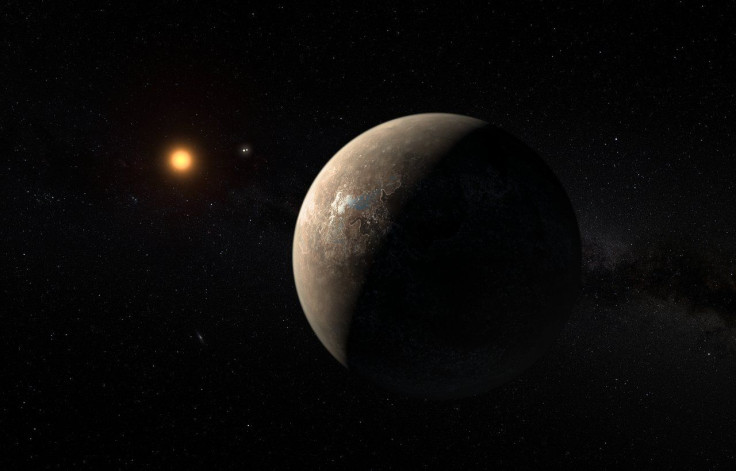Hunt For Alien Life: New Study Bolsters Case For Proxima b’s Habitability

For astronomers looking for life beyond our solar system, Proxima b seems to be getting more alluring by the day.
Earlier this month, researchers from the French National Center for Scientific Research used computer simulations to show that the planet’s surface may be by a single, gigantic ocean over 120 miles deep — significantly boosting the chances of existence of life on it.
Now, in a study accepted for publication in the journal Astronomy and Astrophysics, researchers from the University of Bern in Switzerland argue — also based on computer simulations — that planets such as Proxima b are most likely to be roughly the size of the Earth and contain large amounts of water.
In order to come to this conclusion, the researchers created simulated models of the formation of planets in the habitable zone of low-mass stars, such as Proxima Centauri, which is a red dwarf located just 4.2 light-years from Earth and is only about 12 percent as massive as the sun. They found that 90 percent of such planets should have enough water to account for a staggering 10 percent of their mass.
By comparison, on Earth, water accounts for only 0.02 percent of the planet’s mass.
“Our models succeed in reproducing planets that are similar in terms of mass and period to the ones observed recently,” co-author Yann Alibert said in a statement released Monday. “Interestingly, we find that planets in close-in orbits around these type of stars are of small sizes. Typically, they range between 0.5 and 1.5 Earth radii with a peak at about 1.0 Earth radius.”
This is important, as a planet’s size and its gravity are key factors in determining its habitability — at least for life as we know it. For instance, Proxima b, which passes muster, is estimated to be between 0.94 and 1.4 times the size of Earth.
“Habitable or not, the study of planets orbiting very low mass stars will likely bring exciting new results, improving our knowledge of planet formation, evolution, and potential habitability,” co-author Willy Benz said.
© Copyright IBTimes 2024. All rights reserved.






















